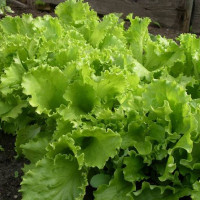Japanese quince (Chaenomeles japonica) / Chaenomeles japonica - is a small genus of flowering plants in the Rosaceae family. Representatives of the genus grow wild in China and Japan. Deciduous or semi-evergreen shrubs or small trees 1-6 meters tall. Shoots are thorny or thornless. Buds are 1-2 mm long, with two outer scales. The leaves are alternate, crenate-toothed or serrated in outline, on petioles up to two centimeters long. The stipules do not fall off.
The flowers are large 3-4,5 cm in diameter, solitary or collected 2-6 in short racemes, most often bloom before the leaves appear. The corolla is pink, white or scarlet red, with five petals. The calyx falls off when the fruit appears, with five finely serrated or entire sepals. Each flower has 20-50 stamens. There are five pistils, the columns are fused at the base. Ovary five-locular, inferior.
The fruit is pear- or apple-shaped, almost sessile. Seeds without endosperm, brown in color, elongated and pointed at the top, rounded at the bottom. Ripen in September-October.
The wood is sapwood, brown or pinkish-brown in color, diffusely vascular, with clearly visible growth rings. Fibers with bordered pores, rarely with spirals.
Chaenomeles are very decorative and are often used to create hedges, groups and trellises, as well as for bonsai. Propagated by seeds, green and root cuttings, root suckers, dividing the bush and layering.
The fruits are aromatic and are used to make compotes, jellies and jams.

No questions about this product, be the first and ask your question.























